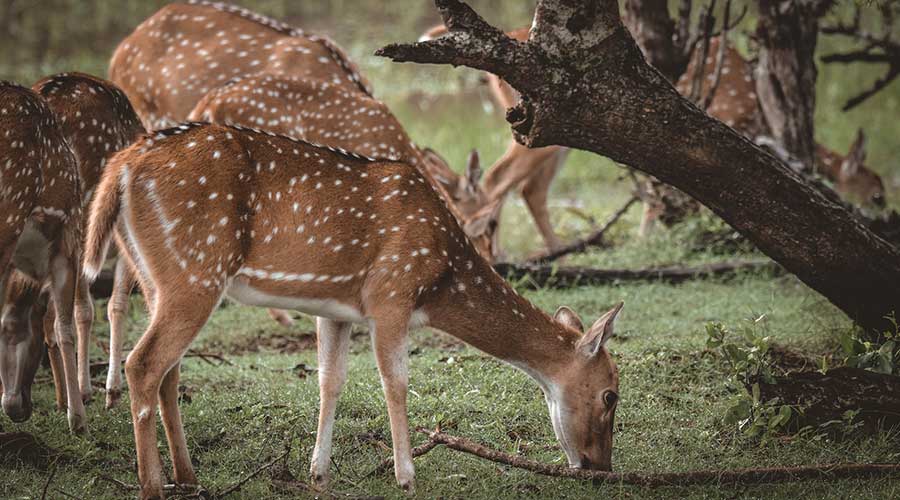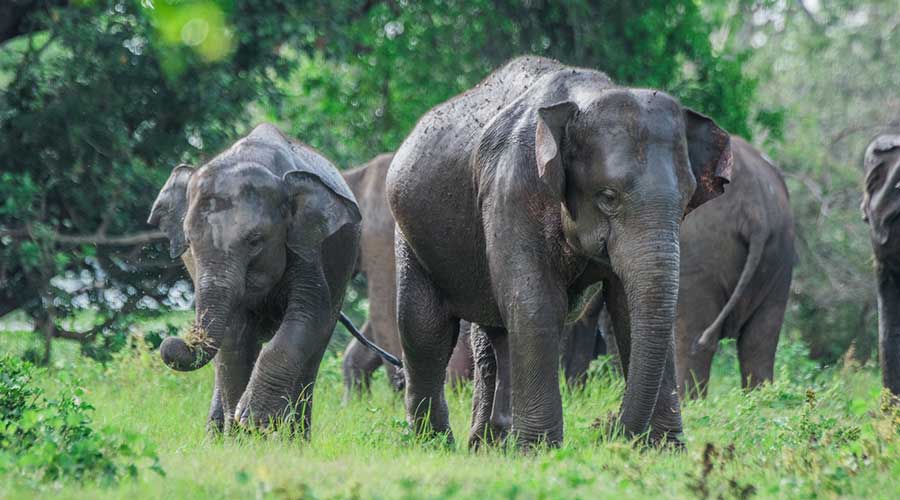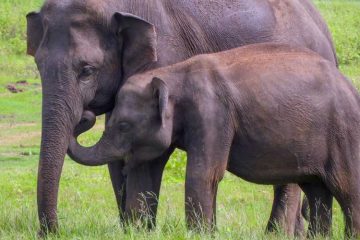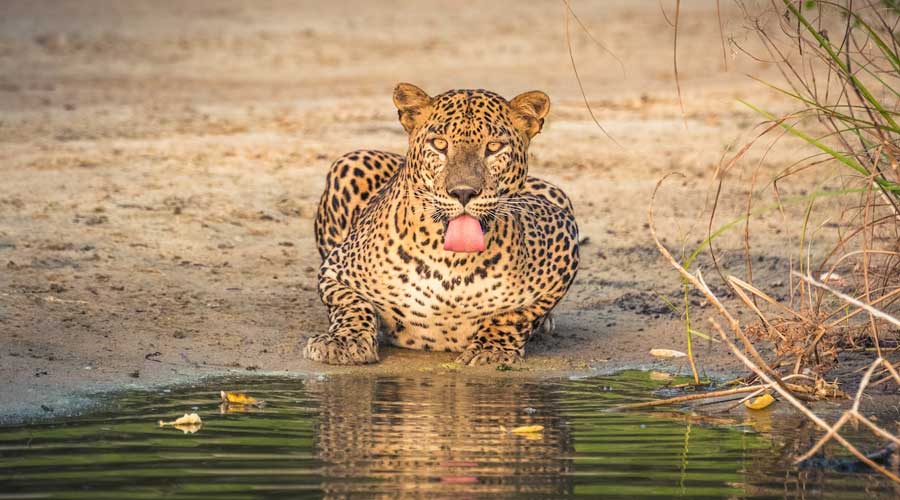Yala National Park Highlights
Yala National Park is a world-renowned wildlife sanctuary located in the southeastern region of Sri Lanka. Established in 1900, it is one of the oldest national parks in Sri Lanka and is recognized as one of the most important protected areas in the world. Spanning over 1,259 square kilometers, the park is home to a diverse range of flora and fauna and attracts thousands of visitors every year.
Early History
The history of Yala National Park dates back to the ancient Kingdom of Ruhuna, which existed between the 3rd century BCE and 10th century CE. The area was used as a hunting ground for the rulers of the kingdom, and there are several references to it in ancient literature. The area continued to be used as a hunting ground during the colonial period, when Sri Lanka was under British rule. In 1900, the colonial government declared the area a wildlife sanctuary, making it one of the earliest protected areas in the world.
Development of the National Park
After Sri Lanka gained independence in 1948, efforts were made to further develop the Yala Sanctuary into a national park. In 1954, it was officially designated as a national park, and in 1978 it was expanded to its current size. The park was also divided into five blocks, with only two of them being open to visitors. In 2002, the park was temporarily closed due to the civil war that was raging in the country. It was reopened in 2003, and since then, it has continued to attract visitors from around the world.
Landscapes of Yala National Park
Yala National Park is home to a diverse range of landscapes, making it a unique destination in Sri Lanka. The park is divided into five blocks, with two blocks open to visitors. Block 1 is the most popular block and is home to the highest concentration of wildlife in the park. It is dominated by dense forests, rocky outcrops, and grassy plains. Block 2 is less visited but has a more varied landscape, with wetlands, forests, and grasslands. The park is also home to several natural features, including several lakes and lagoons, which are essential habitats for several bird species. One of the most iconic features of the park is the Yala Rock, a massive granite outcrop that dominates the park’s skyline.
Conservation Efforts in Yala National Park
Conservation efforts in Yala National Park have come a long way since its establishment. Today, the park is managed by the Department of Wildlife Conservation, which is responsible for protecting the park’s flora and fauna and managing the park’s tourism industry.
Flora
Yala National Park is home to a variety of plant species, ranging from shrubs and grasses to tall trees. The park has a dry zone forest, which is characterized by thorny scrub jungle, open grasslands, and freshwater wetlands. Some of the notable plant species found in the park include the Palu (Manilkara hexandra), Satin (Chloroxylon swietenia), Weera (Drypetes sepiaria), Ebony (Diospyros ebenum), and Kumbuk (Terminalia arjuna). One of the most significant floral attractions in Yala National Park is the flowering trees that bloom during the dry season. The blossoms of the Palu tree, for instance, create a stunning sight with their bright orange color. The Satin tree, which is also known as the “Sri Lankan satinwood,” is another notable species that produces yellow flowers during the dry season.
Fauna
Yala National Park is renowned for its diverse range of wildlife, including several endangered species. The park is home to one of the highest densities of leopards in the world, making it an excellent destination for wildlife enthusiasts. Other notable animal species found in the park include elephants, sloth bears, sambar deer, spotted deer, water buffalo, and crocodiles. The birdlife in Yala National Park is equally impressive, with over 215 species recorded. Some of the notable bird species found in the park include the Sri Lankan junglefowl, painted stork, lesser flamingo, black-necked stork, and crested serpent eagle. In addition to the larger animals, Yala National Park is also home to a variety of reptiles, including several species of snakes and lizards. The park is home to the Sri Lankan krait, which is considered to be one of the most venomous snakes in the world. Visitors are advised to exercise caution and keep a safe distance from these reptiles.
Yala National Park is a treasure trove of flora and fauna, and a visit to the park is an unforgettable experience. The park’s unique mix of dry zone forest, open grasslands, and freshwater wetlands provides a habitat for a wide variety of plant and animal species.
Ecosystems
Yala National Park is divided into five ecosystems, each with its unique features and wildlife. The first ecosystem is the Coastal Ecosystem, which includes sandy beaches and lagoons. Visitors can spot several aquatic birds such as pelicans, terns, and gulls in this ecosystem. The second ecosystem is the Forest Ecosystem, which includes several types of dry forests such as thorn forests, arid forests, and evergreen forests. Visitors can spot several species of mammals such as leopards, elephants, and bears in this ecosystem.
The third ecosystem is the Scrub Ecosystem, which includes several types of scrublands, grasslands, and shrublands.
Safari Options – Book Your Safari
There are several safari options available at Yala National Park. You can choose between a full-day safari, a half-day safari, or an evening safari. The full-day safari is the most popular option, as it gives you plenty of time to explore the park and spot wildlife. The half-day safari is ideal if you have limited time, and the evening safari is perfect for those who want to see the park’s nocturnal animals.
The safari vehicles used in Yala National Park are open-top jeeps, which allow you to enjoy unobstructed views of the surroundings. The jeeps are equipped with comfortable seats and a knowledgeable guide who will help you spot wildlife and provide information about the park.
Tips for a Successful Safari
To make the most of your Yala National Park safari, it is essential to follow some tips and guidelines. Here are few tips to keep in mind:
- Dress comfortably and wear sturdy shoes.
- Bring a hat, insect repellent and sunscreen.
- Carry a camera with a zoom lens to capture wildlife sightings.
- Be respectful of the animals and follow the guide’s instructions.
- Avoid making loud noises or sudden movements.
- Do not disturb the natural environment and don’t litter.
A Yala National Park safari is an unforgettable experience that will take you on a journey through Sri Lanka’s wilderness. With its diverse wildlife and stunning landscapes, the park offers a unique opportunity to get up close and personal with nature.
- Morning safari in Yala National Park (6.00 am to 10.00 am)
- Afternoon safari in Yala National Park (2 pm to 6.00 pm)
- Full Day safari in Yala National Park (6.00 pm to 6.00 pm)
Camping in Yala National Park – Book a Camp
Yala National Park, located in the southeast of Sri Lanka, is a nature lover’s paradise. The park is home to a diverse range of wildlife, including elephants, leopards, sloth bears, and a wide variety of bird species. To truly immerse yourself in the beauty of the park, camping is an experience not to be missed. There are several camping options available within Yala National Park, including camping sites managed by the Department of Wildlife Conservation, private safari companies, and luxury tented camps. Each offers a unique experience, but all allow you to get up close and personal with the park’s flora and fauna. If you’re looking for a more traditional camping experience, the Department of Wildlife Conservation manages several campsites within the park. These sites offer basic amenities such as toilets and showers, and you can pitch your own tent or rent one from the park. The campsites are located in prime wildlife viewing areas, so you can expect to see plenty of animals during your stay. Private safari companies also offer camping experiences within the park, with a range of options to suit different budgets and preferences. Some campsites offer more luxurious accommodations, such as permanent tented camps with en suite bathrooms and air conditioning, while others provide a more rustic experience with basic tents and shared bathrooms. All of these options, however, include guided wildlife safaris and meals cooked over an open fire. For those looking for a truly indulgent camping experience, there are several luxury tented camps within Yala National Park. These camps offer all the comforts of a five-star hotel, with spacious tents furnished with plush bedding, private bathrooms, and outdoor lounges with stunning views of the park. In addition to guided safaris and gourmet meals, many luxury camps offer other activities such as yoga classes and spa treatments. No matter which camping option you choose, you can expect to be immersed in the natural beauty of Yala National Park. Wake up to the sound of birdsong and the sight of monkeys playing in the trees. Spend your days exploring the park on guided safaris, keeping an eye out for leopards lounging in trees and elephants grazing in the grasslands. In the evenings, gather around a campfire to share stories and listen to the sounds of the wilderness. While camping in Yala National Park is a memorable experience, it’s important to remember that you are a guest in the animals’ home. Always follow the park’s rules and regulations, and be respectful of the wildlife and their habitats. With these considerations in mind, camping in Yala National Park is an unforgettable experience that will stay with you long after you’ve left the park.
Best Time to Visit
The peak season to visit Yala National Park is from June to September, when the weather is dry and sunny. During this time, the park’s water sources dry up, and animals congregate around remaining waterholes, making them easier to spot. This is particularly true for large herds of elephants, which can be seen bathing and playing in the water. The dry season also makes it easier to navigate through the park’s terrain, as the trails are not muddy, and the vegetation is not as thick. However, the dry season is also the busiest time of year, and visitors can expect long queues at the park entrance and crowded safari tours. The park’s popularity during this time can also result in higher prices for accommodations and safari tours. If you’re looking to avoid the crowds and don’t mind slightly cooler temperatures, the off-peak season from May to September is a good time to visit Yala National Park. During this time, the park’s water sources are replenished, and the vegetation is lush and green. The monsoon rains usually start in May and continue until September, and while this may make navigating the park’s trails slightly challenging, it also means that the park’s wildlife is more active and easier to spot. The cooler temperatures also make for a more comfortable safari experience. Visiting Yala National Park during the monsoon season does come with a few downsides, however. The heavy rains can sometimes result in flooding, making some parts of the park inaccessible. Additionally, the park’s safari tours may be cancelled if the weather is particularly bad, so it’s important to keep an eye on the weather forecast before booking your trip.
Overall, the best time to visit Yala National Park depends on your personal preferences. If you’re looking to spot large herds of animals and don’t mind crowds, then the dry season is the ideal time to visit. On the other hand, if you want to avoid the crowds and experience the park’s lush, green landscape, then the off-peak season is a good option. Regardless of when you decide to visit, Yala National Park is sure to offer a memorable and exciting wildlife experience.



